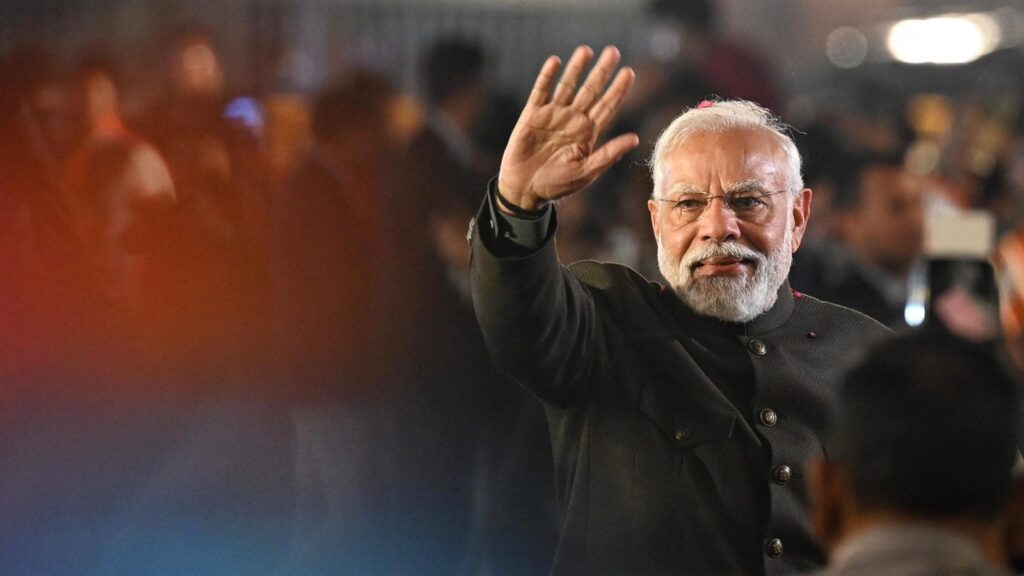A 0-3 verdict in three Hindi heartland states in 2018 didn’t really mean anything for the 2019 national election, so is there anything to suggest a 3-0 verdict in 2023 means something for 2024? Perhaps. Or perhaps not. But the results of the four state elections — Rajasthan, Chhattisgarh, and Madhya Pradesh, in the heartland, and Telangana in the South — do set the context for next year’s national election (counting in Mizoram, which also went to polls, will be on Monday) in three ways. One, the issues that matter. Two, the relative position of weakness from which the Congress will now have to negotiate with its partners in the INDIA bloc of opposition parties. And three, the method behind the Bharatiya Janata Party’s ability to combat not just anti-incumbency (a voter-side problem) but the more dangerous: fatigue (a party worker-side problem).
The menu of issues across states was similar (although the weightages may have been different): Welfare, leadership, corruption, and caste. Welfare clearly worked for the BJP in Madhya Pradesh, but didn’t work for the Congress in Rajasthan — suggesting that the former managed to tackle anti-incumbency far more successfully than the latter. In Madhya Pradesh, the BJP did it through what it termed “collective leadership”, by not projecting a chief ministerial candidate, a departure from the norm for the party in states where it is the incumbent. It fielded several parliamentarians, including ministers. It did the same in Rajasthan, where it wasn’t in power, but this may have also been driven by the desire to set the stage for a generational change in leadership in the state (now that it has won, the party can always choose not to do this, but it does have the option of a generational change in all three heartland states).
Corruption may have played a part in felling the Congress’ Ashok Gehlot in Rajasthan, just as it may have the party’s Bhupesh Baghel in Chhattisgarh and the Bharat Rashtra Samithi’s K Chandrashekar Rao in Telangana (the Congress’ welfare guarantees, modelled after the ones in Karnataka that enabled it wrest power from the BJP in that state, may have helped too). And the jury is still out on whether the Congress’ promise of a caste survey to wrest Other Backward Classes (OBC) votes from the BJP worked — it does not seem to have — even as the BJP’s performance in Chhattisgarh and the tribal belt of Madhya Pradesh indicates that the national political hegemon’s effort to grow its coalition by co-opting the tribal vote is beginning to work.
The Congress, which has reason to cheer the Telangana verdict – a rare instance of the party wresting back power from a local rival – will be disappointed with its showing in the three states where it won in 2018. It is believed that the party deferred seat-sharing discussions with other members of the INDIA bloc, in anticipation of doing well in this round of state elections and, therefore, being in a stronger position to negotiate. That cannot be — not after its showing in Rajasthan, Chhattisgarh, and Madhya Pradesh, all direct contests against the BJP. Leave alone the prospects of the INDIA grouping in 2024, these results cast a long shadow on the ability of its constituents to arrive at any sort of meaningful arrangement ahead of the national elections. Indeed, barring Himachal Pradesh, the Congress is now a south Indian party — something that should weaken its negotiating position further. The South has enough strong regional parties capable of taking on the BJP; what was needed was a party that could take it on in the heartland; these results show that the Congress is not it.
As for the BJP, it could not have asked for a better walk-up to 2024. In the three states where it has won, the party did not project a chief ministerial face. The elections were fought under the banner of collective leadership and Prime Minister Narendra Modi. The caste census, which could have fragmented its rainbow Hindu coalition, does not seem to have found much traction. And, with a significant number of new faces in Rajasthan, Chhattisgarh, and Madhya Pradesh, the party can now effect a generational change in leadership in these states — if it is of a mind to. The results also show that a decade after its ascent to power in the Centre, the BJP’s election machine remains efficient — and hungry.
There’s a fourth way as well in which this round of assembly elections sets the context for 2024, although this has more to do with how we study elections and our ability to predict outcomes. All four verdicts were clear — in terms of vote share and seats; none was as close as opinion polls said they would be. Ahead of 2024, that may warrant a relook at how opinion polls are conducted and how election campaigns are analysed.
Continue reading with HT Premium Subscription
Daily E Paper I Premium Articles I Brunch E Magazine I Daily Infographics


